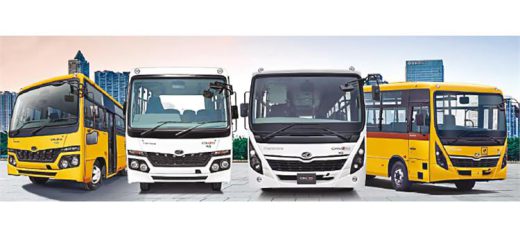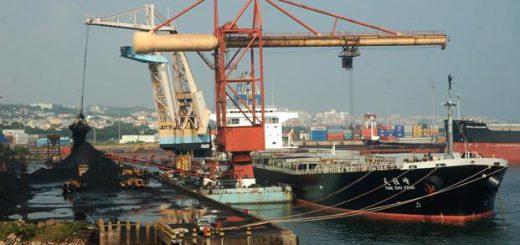4 Logistics Trends for 2024: The Race To Tech-Up
In today’s rapidly evolving world, technology plays a crucial role in shaping the future of the logistics industry. As supply chains grow increasingly complex and consumer expectations continue to rise, logistics companies embrace technological advancements to streamline operations, enhance efficiency, and stay competitive in the market. From automation and robotics to data analytics and artificial intelligence, logistics trends are driving a relentless race to tech-up. This article explores the key trends set to transform the logistics landscape in 2024 and beyond, highlighting the potential impact of these innovations on warehousing, transportation, decision-making, security, sustainability, and operational optimization.
1. The Role of Technology in Driving Logistics Innovation
Technology has become the driving force behind innovation in the logistics industry. From automated warehouses to smart delivery networks, the adoption of cutting-edge tech solutions has become essential for companies to stay competitive and meet customer expectations. With the right technology in place, logistics companies can streamline operations, improve efficiency, and ultimately deliver packages faster than you can say “Amazon Prime.”
2. Automation and Robotics: Transforming Warehousing and Supply Chain Operations
2.1 The Rise of Warehouse Automation
Gone are the days of warehouse workers tirelessly running up and down aisles searching for that elusive package. Thanks to automation, warehouses have become a well-oiled machine. Robots zoom around, picking and packing items with precision and speed. It’s like watching a high-tech dance floor but with fewer sequins and more cardboard boxes.
2.2 Robotic Solutions for Efficient Inventory Management
Keeping track of inventory can be a logistical nightmare, pun intended. But fear not, because robots are here to save the day (and your sanity). These trusty bots use advanced algorithms and sensors to monitor inventory levels, ensuring that you never run out of that one crucial item just when you need it most. It’s like having a personal inventory guru, minus the expensive consulting fees.
2.3 Autonomous Vehicles in Supply Chain Transportation
Picture this: a convoy of self-driving trucks making their way down the highway, seamlessly navigating traffic and delivering goods faster than you can say “Uber Eats.” Autonomous vehicles are revolutionizing supply chain transportation, eliminating the need for human drivers and reducing the risk of road accidents. It’s a win-win situation for both logistics companies and the general public, except maybe for the professional drivers who will have to find new career paths. Sorry, guys.
Also Read:- Dos and Don’ts to Consider while Implementing Logistics Software
3. Smart Transportation: Revolutionizing Delivery and Last-Mile Logistics
3.1 The Emergence of Smart Delivery Networks
Smart delivery networks are like the Avengers of the logistics world, swooping in to save the day and ensure packages arrive at your doorstep in record time. These networks use advanced technologies like GPS tracking and real-time data analysis to optimize delivery routes, minimize delays, and keep customers happy. With smart delivery networks, you’ll never have to wait anxiously for your online shopping haul again. The future is now, my friends.
3.2 Real-Time Tracking and Delivery Optimization
Remember the days when you had to rely on vague delivery timeframes like “between 9 am and 5 pm”? Well, those days are long gone. With real-time tracking, you can now follow your package’s journey from the warehouse to your front door, all in real-time. It’s like having your own personal paparazzi, but instead of following celebrities, they’re following your package. Oh, the glamor.
3.3 Drones and Urban Air Mobility for Last-Mile Delivery
Want to receive your package by air, like a fancy VIP? Well, now you can, thanks to the wonders of drones and urban air mobility. These high-flying machines are revolutionizing last-mile delivery, overcoming traffic congestion, and getting your package to you in the blink of an eye. However, it’s like having your own personal air force, minus the fighter jets and military uniforms.
4. Data Analytics and Artificial Intelligence: Enhancing Efficiency and Decision-Making
4.1 Leveraging Big Data in Logistics Operations
Logistics companies are sitting on a goldmine of data, and they’re finally starting to realize its value. By leveraging big data analytics, companies can gain invaluable insights into customer behavior, optimize routes, and reduce costs. It’s like having a crystal ball that tells you exactly what your customers want and how to get it to them. Magic? No, just good data analytics.
4.2 Predictive Analytics for Demand Forecasting
Predicting the future might sound like a job for fortune tellers, but logistics companies are doing it with the help of predictive analytics. By analyzing historical data and trends, companies can forecast demand with uncanny accuracy. This means they can stock up on the right products at the right time, ensuring that they never run out of that must-have item, like avocado toast or cat-shaped marshmallows. Essential stuff, really.
4.3 AI-powered Solutions for Route Optimization and Risk Management
Artificial intelligence is not just a sci-fi fantasy; it’s also a logistics superhero. AI-powered solutions can optimize routes, taking into account factors like traffic, weather conditions, and even driver preferences (because everyone deserves a scenic route once in a while). And when it comes to risk management, AI can analyze data to identify potential risks and suggest proactive measures. It’s like having a butler who can navigate the entire city at lightning speed and protect you from danger.
Also Read:- Impact of Time Zone Changes on Truckers
In conclusion
The logistics industry is on the brink of a technological revolution, driven by automation, robotics, smart transportation, data analytics, blockchain, sustainability, and augmented reality. However, by embracing these innovations, companies can boost operational efficiency, enhance customer experiences, and drive sustainable growth. Those successfully integrating these technologies will thrive in the competitive landscape, while others risk being left behind.




Recent Comments